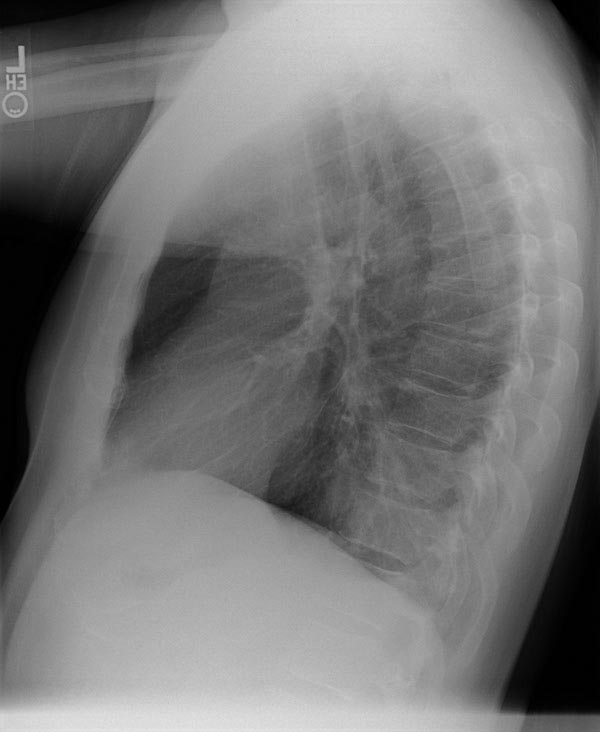- Pulmonary sequestration
Infobox_Disease
Name = PAGENAME

Caption =
DiseasesDB = 32120
ICD10 = ICD10|Q|33|2|q|30
ICD9 = ICD9|748.5
ICDO =
OMIM =
MedlinePlus =
eMedicineSubj = ped
eMedicineTopic = 2628
eMedicine_mult = eMedicine2|radio|585 | MeshID = D001998
A pulmonary sequestration, also known as a bronchopulmonary sequestration or a cystic lung lesion, is a medical condition where a piece of tissue that develops intolung tissue is not attached to the pulmonary blood supply and does not communicate with the other lung tissue. Often it gets its blood supply from thethoracic aorta . "Communication" is a medical phrase indicating that it is not connected to the standardbronchial airways and that it performs no function in respiration.This condition is normally detected in children and is generally held to be
congenital in nature. The treatment for this is asegmentectomy via athoracotomy . More and more, these lesions are diagnosed byprenatal ultrasound .Variations
There are two different kinds of pulmonary sequestrations,
intralobar andextralobar . The generally accepted difference between these seems to whether or not the sequestration has its ownpleura , although some thoracic surgeons seem to prefer a definition that relates to the degree of vascular connection for the sequestration.ymptoms
Symptoms can vary greatly, but they include a persistent dry cough.
Diagnosis
Sequestrations can be identified in-utero via an abnormal artery on ultrasound. The gold standard for diagnosis is pulmonary angiography. But since it is a very invasive procedure, it is getting replaced by CT Scan with a contrasting fluid, as the investigation of choice.Further studies are required for comparing sensitivity and specificity of angiograms versus ct scans in diagnosing pulmonary sequestration.
Complications
Failure to have a pulmonary sequestration removed can lead to a number of complications. These include:
* It can be fatal if you have
hemorrhage of the blood vessels
* It can cause cardiovascular problems due to the creation of ashunt where blood flows in a shortcut through the feed off the aorta.
* It is necessary to prevent long-term infections. Things liketuberculosis ,aspergillosis , bronchial carcinoid, brunchogenic squamous cell carcinoma.Treatments
Usually the sequestration is removed after birth via surgery. In most cases this surgery is safe and effective; the child will grow up to have normal lung function.
In a few instances, fetuses with sequestrations develop problematic fluid collections in the chest cavity. In these situations a Harrison catheter shunt can be used to drain the chest fluid into the amniotic fluid.
In rare instances where the fetus has a very large lesion, resuscitation after delivery can be dangerous. In these situations a specialized delivery for management of the airway compression can be planned called the
EXIT procedure .ources
* cite journal
author=Truitt AK, Carr SR, Cassese J, Kurkchubasche AG, Tracy TF Jr, Luks FI.
title=Perinatal management of congenital cystic lung lesions in the age of minimally invasive surgery
journal=J Pediatr Surg
year=2006
pages=41:893–896
* cite journal
author=Savic B, Birtel FJ, Tholen W, Funke HD, Knoche R.
title=Lung seqestration: report of seven cases and review of 540 published cases
journal=Thorax
year=1979
pages=34:96–101
* cite journal
author=Fabre O, Porte H, Godart F, Rey C, Wurtz A.
title=Long-Term Cardiovascular Consequences of Undiagnosed Intralobar Pulmonary Sequestration
journal=Annals of Thoracic Surgery
year=1998
pages=65;1144–6
*cite book
author=Ferguson
title=Gibbons surgery of the Chest
chapter=Congenital lesion of the lungs and emphysema
publisher=WB Saunders
year=1983
id=ISBN Unknown
pages=668-709
edition=4th ?
* cite journal
author=Rubin E, Garcia H, Horowitz M, Guerra J.
title=Fatal Massive Hemoptysia Secondary to Intralobar Sequestration
journal=Chest
year=1994
pages=954–955
doi=10.1378/chest.106.3.954
volume=106
pmid=8082388
*cite book
author=Sabiston D, Spencer F
title=Surgery of the Chest
pages=853-862
edition=6thExternal links
* [http://www.emedicine.com/ped/topic2628.htm Emedicine on pulmonary sequestrations]
* [http://fetus.ucsfmedicalcenter.org/pulmonary_sequestration/ UCSF Fetal Treatment Center: Pulmonary Sequestration]
Wikimedia Foundation. 2010.
